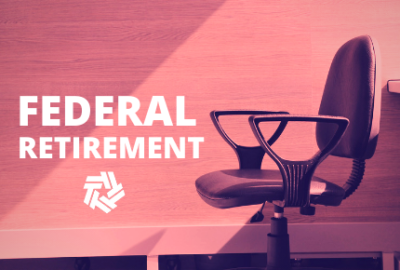Retirement life: Dining out or Meals on Wheels?
Time, especially for federal workers under the Federal Employees Retirement System (FERS), can be on your side. If you plan wisely and begin early.
Years ago, a friend, Army buddy and Labor Department employee, said something rather profound. Especially for an 18-year old kid. What he said was that the day an individual starts planning for retirement is the day that person unofficially reaches adulthood! At the time I didn’t find it worth chiseling in stone. But upon later reflection and as the birthday cake candles increasingly look like tiny forest fires, what he said makes a lot of sense. It makes a lot of sense. His federal service began long ago. He retired under the Civil Service Retirement System (CSRS), with its more generous retirement formula. And he has gotten a regular cost-of-living-adjustment (COLA) each year.
Bottom line, like many of his peers, he is in good shape. In fact, he‘s happier than a pig in whatever pigs are happiest in. And he started serious retirement planning in his 30s. Which is better than 40s, 50s or 60s. Certainly not wait until you are actually eligible to retire.
Time, especially for federal and postal workers under the Federal Employees Retirement System (FERS), can be on your side. If you plan wisely and begin early. That’s especially true with TSP decisions. How much to put in, where to invest, what to do when the market tanks. Because when they retire, FERS people are not fully protected from inflation. If living costs exceed 2%, the FERS retirees get a diet-COLA. One percentage point less than the actual increase in what you pay for food, transportation, housing and fun.
Many things you do in your 20s, 30s and 40s, especially with the TSP, will have a massive impact on your lifestyle when you do retire. Especially when a growing number of people are retired for at least as long as they worked. 30 years with a bi-weekly paycheck replaced by 30 years of a single, smaller monthly deposit can mean a dramatic change in lifestyle. Especially in periods when inflation exceeds cost-of-living-adjustments for FERS retirees.
So how do you have a happy, comfortable retirement if you are covered by FERS? We asked Abraham Grungold for tips on surviving and even thriving under the FERS program, which covers most current federal workers. For credentials, he’s a career fed, part time financial coach and very successful TSP investor. Here’s what he wrote:
FERS Retirement Mistakes
Thinking about your FERS retirement should begin on your first day of work. At your new position, you will fill out dozens of forms and listen to presentations on benefits. It is important to get started with your retirement plans, and you can always adjust along the way. However, there are mistakes that employees make when it comes to retirement, but you can avoid them. So, for your benefit, here are the top 7 retirement mistakes for FERS employees to avoid.
- Pay yourself first – TSP employee contributions of at least 5% guarantee a 5% employer match from the government. Thus, you should be taking advantage of this free money every year of your career.
- Life insurance – During their career, FEDs spend a fortune on government-sponsored plans. Instead, if you shop in the private sector, life insurance can be purchased at a much cheaper rate for the same type of coverage.
- Long term care – This is a critical benefit for employees who could be injured during their federal career or for once they reach their elder years. Obtaining a basic long-term plan is better than having no plan at all.
- Health insurance – In order to have health insurance in retirement, you must carry it five consecutive years before retiring. Even an inexpensive self-plan can save you from relying on a partner’s plan since their plan could become too expensive or you could face divorce prior to retirement.
- Retire at age 62 – Working to age 62 provides a 10% increase in your retirement. Retirement prior to age 62 will leave behind a big chunk of your retirement annuity income.
- TSP and retirement – Deciding to transfer your entire TSP in retirement and close out your TSP account prevents you from returning to the TSP. Therefore, you should keep at least 500 dollars in your TSP to give you the right to return.
- Divorce agreements – Selecting a retirement date that does not match what aligns with your ex-partner’s dues may be a costly mistake. Be sure to check your divorce stipulation agreement.
In my business as a financial coach, many federal employees contact me considering retirement and asking me to help them figure out which is the best year for them to retire. I perform all their calculations and discuss their income during their retirement. We discuss and plan all their FERS decisions and how they should avoid any mistakes. Retirement is different for everyone, and many factors need to be considered.
Financial success can easily be achieved; it only takes a little effort.
Any questions or comments please contact me at Abraham Grungold – AG Financial Services or my Facebook page at FERS Federal Employees.
Nearly Useless Factoid
By Alazar Moges
With his May 8, 2015 visit to South Dakota on Air Force One, President Barack Obama became the fourth president to visit every U.S. state during his term. Only Richard Nixon, Bill Clinton and George H.W. Bush also visited all 50 states while in office.
Source: U.S. Embassy
Copyright © 2025 Federal News Network. All rights reserved. This website is not intended for users located within the European Economic Area.
Mike Causey is senior correspondent for Federal News Network and writes his daily Federal Report column on federal employees’ pay, benefits and retirement.
Follow @mcauseyWFED






